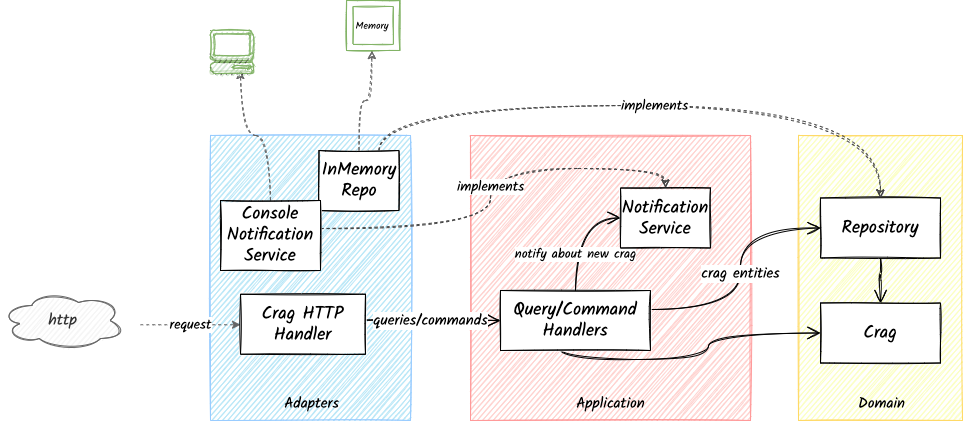Go Climb - Clean Architecture Example in Go
This is a sample project demonstrating an example of clean architecture in go. Detailed description in my blog post: https://pkritiotis.io/clean-architecture-in-golang/
Code Design
Application Overview
Use Cases
As a web client, I want to be able to
- Get all available crags.
- Get a crag by ID.
- Add a crag by providing a name, country, and description.
- Update a crag by providing a name, country, and description.
- Remove a crag by ID.
As an application administrator
- When a new crag is added, I want to receive a notification at a pre-agreed channel.
Technical requirements
- Operations should be exposed via an HTTP restful interface.
- For simplicity purposes,
- The crags should be stored in memory; no need for persistence storage.
- Notifications should be sent in a console application.
Project Structure
Go Climb follows the group-by-layer structure:
├── go-climb
│ ├── cmd/
│ ├── docs/
│ ├── internal
│ ├── app
│ │ ├── crag
│ │ │ ├── commands
│ │ │ └── queries
│ │ ├── notification
│ │ │ ├── mock_notification.go
│ │ │ └── notification.go
│ │ ├── services.go
│ │ └── services_test.go
│ ├── domain
│ │ └── crag
│ │ ├── crag.go
│ │ ├── mock_repository.go
│ │ └── repository.go
│ ├── inputports
│ │ ├── http
│ │ │ ├── crag
│ │ │ └── server.go
│ │ └── sevices.go
│ ├── outputadapters
│ │ ├── notification
│ │ │ └── console
│ │ ├── services.go
│ │ └── storage
│ │ ├── memory
│ │ └── mysql
| │ └── pkg
| │ ├── time/
| │ └── uuid/
│ └── vendor/-
cmdcontains themain.gofile, the entry point of the application -
docscontains documentation about the application -
internalcontains the main implementation of our application. It consists of the three layers of clean architecture + shared utility code underpkg/- infra
- outputadapters
- inputports
- app
- domain
- pkg
Each of these directories contains its corresponding components, following the group-by-feature approach.
- infra
-
vendorcontains the dependencies of our project
Great, we know how the high-level project structure of Go Climb.
Developer's Handbook
make run ## Run the application
make lint ## Perform linting
make test ## Run unit tests
make build ## Build the app executable for Linux
make fmt ## Format the source code